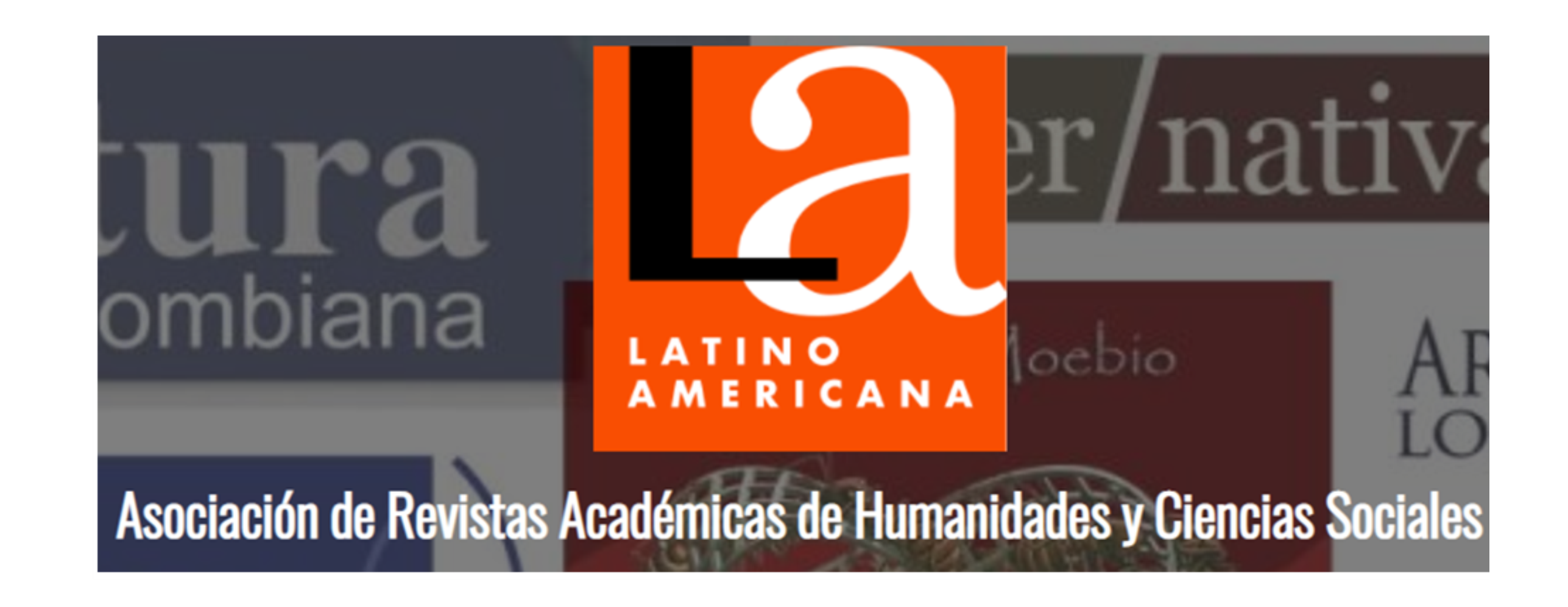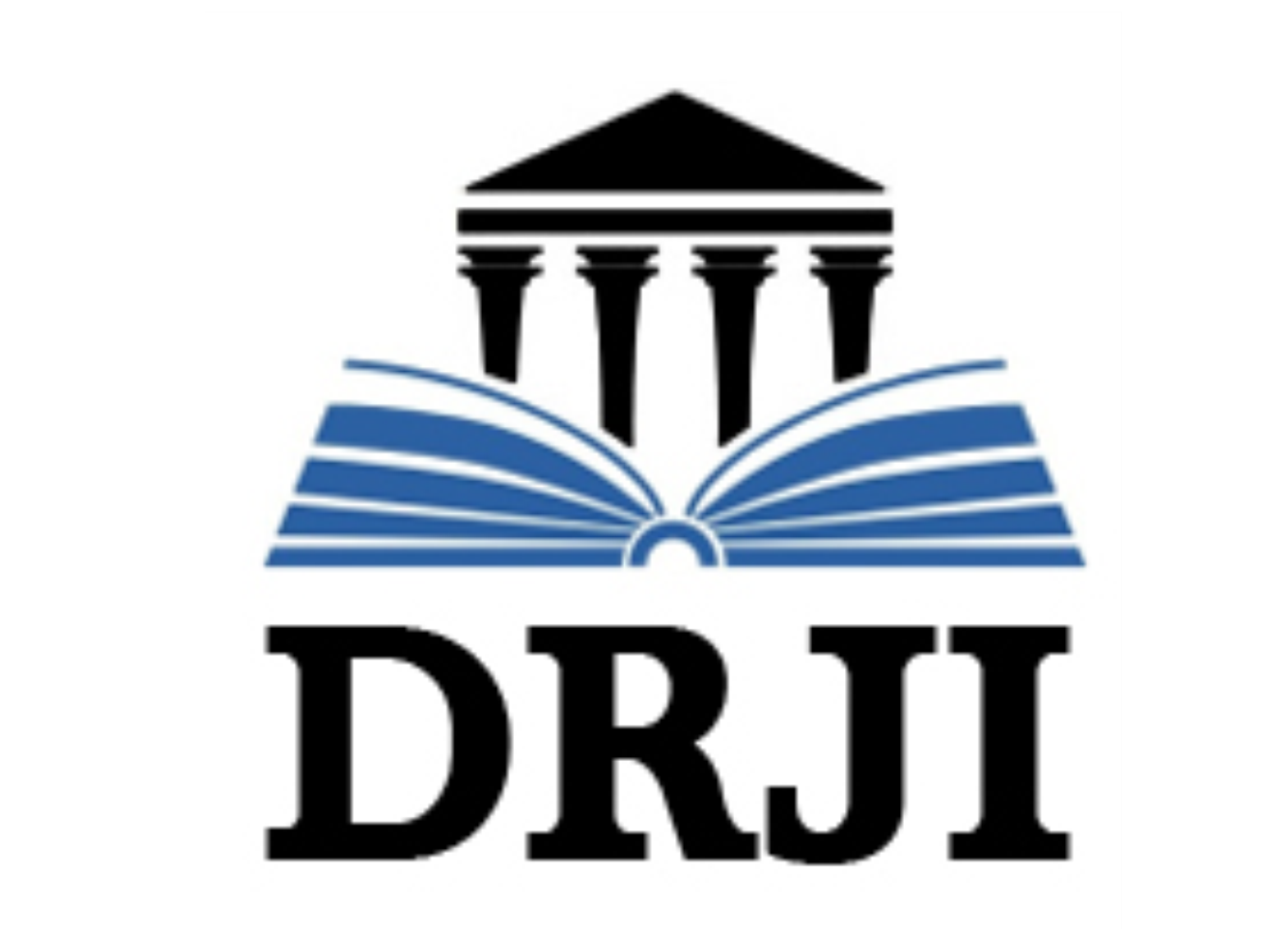Speaking Fluency Improvement In EFL Young Learners Through The Use Of Music
Palabras clave:
ability, efl, fluency, music, speaking activitiesResumen
Speaking fluency is an important aspect for a proper degree of proficiency in any language. English language proficiency is based on the individual performance at it. How much we can understand and be understood depends on how natural and easily we can speak a certain language. For that reason, it is important to describe how speaking fluency interacts within English language. Also, it is important to consider how fluency can be related to music and how much influence music has over it. Considering this, the main purpose of this review article is to examine the ways in which exposure to music may help to improve speaking fluency in EFL students. Aspects related to the commonalities between music and speaking are explored, as well as their application in the teaching of English as a foreign language.
The highlight the importance of considering the use of strategies that incorporate a variety of music related activities to promote student engagement and speaking fluency. Results from this research may be useful for future studies regarding speaking fluency and speaking abilities overall.
Referencias
Abbott, M. (2002). Using Music to Promote L2 Learning Among Adult Learners. TESOL Journal, VOL. 11, NO. 1.
Adawiyah, A. (2017). The Effectiveness of Popular Songs in Improving Students' Listening Skill (Thesis). Jakarta: SYARIF HIDAYATULLAH STATE ISLAMIC UNIVERSITY.
Adnan, A. H., Raja, P., & Sudirman, S. (2014). TEACHING SPEAKING THROUGH POPULAR ENGLISH SONG. Unila Journal of English Teaching, Vol 3, No 8 .
Albouy, P., Peretz, I., Bermudez, P., Zatorre, R. J., Tillmann, B., & Caclin, A. (2019). Specialized neural dynamics for verbal and tonal memory: fMRI evidence in congenital amusia. Human brain mapping, 40(3), 855-867.
Ali, A. (2018). Understanding the Complex Process of Oral Communication. International Journal, 6(1), 123-128.
Anton, R. J. (1990). Combining singing and psychology. Hispania, Vol. 73, pp. 11661170.
Arbib, & Lerdhal. (2013). Musical Syntax and Its Relation to Linguistic Syntax. Language, Music, and the Brain: A Mysterious Relationship, 10 [257 - 272]. Retrieved August 20, 2018, from https://scholarblogs.emory.edu/stoutlab/files/2013/07/Language-Music-andtheBrain.pdf
Arbib, M. (2013). Language, Music and Brain: A Mysterious Relationship. Cambridge: The MIT Press. Retrieved August 21, 2018, from https://scholarblogs.emory.edu/stoutlab/files/2013/07/Language-Music-andtheBrain.pdf
Asensi, J. S. (1995). Música española contemporánea en el aula de español. ASELE Actas VI (pp. 367 - 379). Oviedo: Centro Virtual Cervantes. Retrieved September 15, 2019, from https://cvc.cervantes.es/ensenanza/biblioteca_ele/asele/pdf/06/06_0366.pdf
Baddeley, A. (1992). Working memory. Science, 255, 556–559. doi: 10.1126/science.1736359
Baddeley, A. D., & Hitch, G. J. (2018). The phonological loop as a buffer store: An update. Cortex, 112, 91 - 106.doi:https://doiorg.cicco.idm.oclc.org/10.1016/j.cortex.2018.05.015
Barreiro, S. (2007). Nuevas enseñanzas en las escuelas oficiales de idiomas: renovación metodológica. Madrid, Ministerio de Educación. Retrieved from https://books.google.com.co/books?id=5yVSkLj88lMC&printsec=frontcover&hl=es&source=gbs_ge_su
BECAL. (2019, October 30). Más de 800 postulantes inscriptos a la fecha para concursar por las becas del prgograma BECAL. Retrieved November 2019, 11, from Becas Don Carlos Antonio López: http://www.becal.gov.py/mas-de-800-postulantesinscriptos-a-la-fecha-para-concursar-por-las-becas-del-programa-becal/
Béhague, G. (2020, February 6). Folk and Popular Music. Retrieved from Encyclopaedia Britannica: https://www.britannica.com/art/Latin-American-music/Folk-andpopularmusic#ref259810
Bennett, P. A. (2019). The effects of music in the foreign language learning classroom. Relay Journal, 2 (1), 6-16.
Betti, S. (2012). The Modern Song in a Spanish as a Foreign Language class . Cuadernos Cervantes de la Lengua Española, 50, 26-31.
Brancroft, W. J. (1991). Suggestopedia and language acquisition. Variations on a theme. Amsterdam: Gordon & Breach Publishers.
Bravo, F., Cross, I., Hopkins, C., González, N., Docampo, J., Bruno, C., & Stamatakis, E. (2020). Anterior cingulate and medial prefrontal cortex response to systematically controlled tonal dissonance during passive music listening. Human Brain Mapping, 41(1): 46–66. doi:10.1002/hbm.24786
British Council. (2015). English in Mexico: An examination of policy, perceptions and influencing factors. British Council. Retrieved from http://obiretiesalc.udg.mx/sites/default/files/publicaciones/6._english_in_mexico_britis h_co uncil.pdf
Brown, S. (2000). The “musilanguage” model of music evolution. Neuro Arts, IV; n. 16; pg. 269 - 300. Retrieved from http://neuroarts.org/pdf/musilanguage.pdf
Buchsbaum, B. R. (2013). The role of consciousness in the phonological loop: hidden in plain sight. Frontiers in Psychology, 2013; 4: 496. doi: 10.3389/fpsyg.2013.00496
Bui, G., & Huang, Z. (2018). L2 fluency as influenced by content familiarity and planning: Performance, measurement, and pedagogy. Language Teaching Research, 22(1), 94-114.
Busse, V., Jungclaus, J., Roden, I., Russo, F. A., & Kreutz, G. (2018). Combining Song and Speech-Based Language Teaching: An Intervention With Recently Migrated Children. Frontiers in Psychology, 9: 2386.
Carneiro , M. J., Eusébio, C., & Caldeira, A. (2019). The influence of eventscape on emotions, satisfaction and loyalty: The case of re-enactment events. International Journal of Hospitality Management, 82, 112-124.
Castelo, A. (2018). Songs for Teaching Pronunciation: A Guiding Model. Journal Of Innovation In Psychology, Education & Didactics,, 22(1), 7-22. Retrieved from https://www.uav.ro/jour/index.php/jpe/article/viewFile/584/644
Chen, J.-J. (2011). The Effects of Music Activities on English Pronunciation and Vocabulary Retention of Fourth-grade (ESOL) Students in Taiwan (Doctoral Thesis). Florida: University of Florida.
Christamia, V. (2014). Improving Students' Speaking Skills through English Songs and Puppets (Thesis) . YOGYAKARTA, Indonesia: YOGYAKARTA STATE UNIVERSITY.
Cohut, M. (2019, February 15). Medical News Today. Retrieved from How music motivates the brain to learn: https://www.medicalnewstoday.com/articles/324448
Coulter, K., & Suri, R. (2020). On melodic contour and number preferences: The effects of musical melody on the processing of numerical information. . Psychology & Marketing.
Council of Europe. (2001). Common European Framework of Reference for Languages: Learning, teaching assessment. Strasburg: Cambridge University Press.
Dalton, P. (2018). Approaches to the Treatment of Stuttering. Routledge. Darwin, C. (1876). The Descent of Man and Selection in Relation to Sex. London: Murray.
Deen, J., Van Veen, C., & Schutte, L. (2014). Taalriedels. Amsterdam: Boom.
Degrave, P. (2019). Music in the Foreign Language Classroom: How. Journal of Language Teaching and Research, Vol. 10, No. 3, pp. 412-420.
DelibegovicDzan, N., & Pejic, A. (2016, October). The Effect of Using Songs On Young Learners and Their Motivation for Learning English. New Trends in Social and Liberal Sciences, 40 - 54. doi:10.24819/netsol2016.8
Dissanayake, E. (2000). Antecendents of the temporal arts in early mother-infant interaction.
In N. Wallin, B. Merker, & S. Brown, The origins of music. (pp. 389410.). London: The MIT Press.
Dolcos, F., Iordan, A. D., & Dolcos, S. (2011). Neural correlates of emotion–cognition interactions: A review of evidence from brain imaging investigations. . Journal of Cognitive Psychology, 23(6), 669-694.
Duarte Romero, M., Tinjacá Bernal , L. M., & Carrero Olivares, M. (2012). Using Songs to Encourage Sixth Graders to Develop English Speaking Skills. Profile Issues in Teachers Professional Development, 14(1), 11-28.
Edge, R. L. (2012). Measuring Speech Naturalness of Children who Do and Do Not Stutter: The Effect of Training and Speaker Group on Speech Naturalness Ratings and Agreement Scores when Measured by Inexperienced Listeners (Doctoral dissertation). Oxford: Oxford University.
Encyclopaedia Britannica. (2015, September 23). Popular Art. Retrieved from Encyclopaedia Britannica: https://www.britannica.com/art/popular-art
Encyclopaedia Britannica. (2020, March 26). Rap. Retrieved from Encyclopaedia Britannica: https://www.britannica.com/art/rap
Engh, D. (2013). Why use music in English language learning? A survey of the literature. English Language Teaching, 6 (2), 113-127.
English Oxford Dictionary. (2020). English Oxfor Dictionary. Oxford: Oxford University Press.
Estrella, E. (2019, November 4). An Introduction to the Elements of Music. Retrieved from Liveaboutdotcom: https://www.liveabout.com/the-elements-of-music2455913
Ferreri, L., Aucouturier, J., Muthalib, M., Bigand, E., & Bugaiska, A. (2013). Music improves verbal memory encoding while decreasing prefrontal cortex activity: an fNIRS study. Frontiers in Human Neuroscience, 7, 779. oi:https://doi.org/10.3389/fnhum.2013.00779.
Fillmore, C. J. (1979). Individual differences in language ability and language behavior. NewYork: Academic Press.
Fitch, W. (2010). The Evolution of Language. Cambridge Univ. Press, . [10, 11, 14, 18– 20].
Fonseca-Mora, C., Toscano-Fuentes, C., & Wermke, K. (2011). Melodies that help: The relation between language aptitude and musical intelligence. International Journal of English Studies, 22(1), 101-118.
Frith, S. (2019, October 24). Rock. Retrieved from Enclyclopaedia Britannica: https://www.britannica.com/art/rock-music
Galatro, T. (2018, February 24). Why Do Children Learn Languages Faster than Adults? Retrieved from Tessa International School: https://tessais.org/childrenlearnlanguages-faster-adults/
Gerry , D., Unrau, A., & Trainor , L. J. (2012). Active music classes in infancy enhance musical, communicative and social development . Developmental Science, 15, 398-407.
Gholamhossein, S. (2017). Improving English Speaking Fluency: The Role of Six Factors. Advances in Language and Literary Studies, Volume: 8, pg (100 - 104).
Götz, S. (2013). Fluency in Native and Nonnative English Speech (Studies in Corpus Linguistics, Vol. 53). Amsterdam: John Benjamins Publishing.
Goundareva, I. (2012). Memoria Conferencia Anual 2012 American Association of Teachers of Spanish and Portuguese. Cómo facilitar la producción oral a través de las canciones y de las películas en la clase de español. Ottawa: Universidad de Ottawa.
Graham, C. (1993). Grammarchants: Student Book. New York, NY, USA: Oxford University Press.
Hannan, J., Newman, G., & Kinger, T. (2015). Authentic Communication : Public Speaking for Everyone. New York: International Debate Education Association. Retrieved from http://search.ebscohost.com/login.aspx?direct=true&db=nlebk&AN=1081433&authtype=sso&custid=ns021105&lang=es&site=eds-liveHardan, A. A. (2013). Language Learning Strategies: A general Overview. ProcediaSocialand Behavioral Sciences, 106, 1712-1726.
Hascher, T. (2010). Learning and Emotion. European Educational Research Journal, Volume 9 Number 1, 13 - 28.
Heidari, A., & Araghi, S. M. (2015). A comparative study of the effects of songs and pictures on Iranian EFL learners’ l2 vocabulary acquisition. Journal of Applied Linguistics and Language Research, 2(7), 24-35.
Hernández, S., Fernández , C., & Baptista, L. (2003). Metodología de la Investigación. México: McGraw-Hill Interamericana. Retrieved from https://www.esup.edu.pe/descargas/dep_investigacion/Metodologia%20de%20la%20investigaci%C3%B3n%205ta%20Edici%C3%B3n.pdf
Hismanoglu, M. ( 2000). Language Learning Strategies in Foreign Language Learning and Teaching. The Internet TESL Journal, Vol. VI, No. 8.
Holm, M. E., Björn, P. M., Laine, A., & Korhonen , J. (2020). Achievement emotions amongadolescents receiving special education support in mathematics. Learning andIndividual Differences, 79, 101851.
Hood, P., & Tobutt, K. (2015). Teaching Languages in the Primary School. Sage.
House, S. (1997). An Introduction to Teaching English to Children. London: Richmond Publishing.
Ingham, R. J., Martin, R. R., Haroldson, S. K., Onslow, M., & Leney, M. (1985). Modification of listener-judged naturalness in speech of stutterers. Journal of Speech and Hearing Research, 28, 495-504.
Jäncke, L. (2008). Music, memory and emotion. Journal of Biology, 7(6): 21. doi:10.1186/jbiol82
Johnstone, B. (2018). Discourse analysis. Oxford: John Wiley & Sons.
Jolly, Y. S. (1975). The Use of Songs in Teaching Foreign Languages. The Modern Language Journal, 59 (1‐2): 11-14.
Jonides, J. (2004). How does practice make perfect? Nature Neuroscience, 7, 10-11.
Kamien, R. (2017). Music: An Appreciation. McGraw-Hill Education.
Kanel, K. (2000). Songs in language teaching: Theory and practice. Teacher belief, teacher action: Connecting research and the classroom: Proceedings of the JALT (Japan Association for Language Teaching) 25th Annual International Conference on Language Teaching & Learning and Educational Materials Expo (pp. 69–75.). Tokyo, Japan: JALT.
Karea, S. (2016). Indonesian secondary-trained EFL teachers teaching English to primaryage children: A study of motivational factors and EFL teaching knowledge. Brisbane: Australian Catholic University.
Keskin, F. (2011). Using Songs as Audio Materials in Teaching Turkish as a Foreign Language. Turkish Online Journal of Educational Technology - TOJET, v10 n4, 378-383.
Kleinow, J., & Smith , A. (2000). Influences of Length and Syntactic Complexity on the Speech Motor Stability of the Fluent Speech of Adults Who Stutter. Journal of Speech, Language and Hearing Research, 43(2):548-59.doi:10.1044/jslhr.4302.548
Koelsch, S., Kasper , E., Sammler , D., Schulze, K., Gunter, T., & Friederici, A. D. (2004). Music, language and meaning: brain signatures of semantic processing. Nature Neuroscience, 7(3):302-7. doi:10.1038/nn1197
Kraus, N., & Chandrasekaran, B. (2010). Music training for the development of auditory skills. Nature Reviews Neuroscience, 11, 599-605.
Larsen , J. T., & Stastny , B. J. (2011). It’s a bittersweet symphony: Simul-taneously mixed emotional responses to music with conflicting cues. Emotion, 11, 1469– 1473.
Lenneberg, E. H. (1967). Biological foundations of language. New York: Wiley .
Leong, L.-M., & Ahmadi, S. (2017). An analysis of factors influencing learners’ English speaking skill. International Journal of Research in English Education, 2(1), 3441.
Levelt, W. J. (1989). Speaking : From Intention to Articulation. Cambridge: Mass: MIT Press. Retrieved from http://search.ebscohost.com/login.aspx?direct=true&db=nlebk&AN=1735&authtype=sso&custid=ns021105&lang=es&site=eds-live
Liva , C., Sutapa , Y., Gatot, Y., & Bunau, E. (2015). Improving the Students Speaking Ability through English Song. Jurnal Pendidikan dan Pembelajaran Khatulistiwa, Vol. 14, N.2.
Logan, K. J. (2015). Fluency Disorders. San Diego, CA: Plural Publishing, Inc. Retrieved from http://search.ebscohost.com/login.aspx?direct=true&AuthType=sso&db=e000x ww&AN=1513401&lang=es&site=eds-live&scope=site
Lozanov, G. (1978). Suggestology and outlines of Suggestopedy. London: Gordon and Breach.
Luoma, S. (2009). Assessing Speaking. Cambridge, UK: Cambridge University Press.
Maess , B., & Koelsch, S. (2001). Musical Syntax is Processed in Broca's area: An MEG study. . Liepzig : Max Planck Institute of Cognitive Neuroscience.
Maisa, S. (2018). Language Fluency and Its Evaluation:A Review of the Existing Literature. Language in India, Vol. 18, pp/ 320 - 329.
Manivannan, G. (2019, April 22). Importance of the English Language. Retrieved from Using English.com: https://www.usingenglish.com/articles/importance-englishlanguage.html
Marjanen, K. (2009). The Belly-Button Chord. Connections of Pre- and Postnatal Music. Jyväskylä: Jyväskylä University Printing House .
Marjanen, K. (2016). The European Music Portfolio:Music Pedagogies as a Support for Language Learning. Hellenic Journal of Music, Vol. 7 | Article 2, pp. 18 - 34. Retrieved 07 17, 2020, from Hellenic Journal of Music, Education and Culture: file:///C:/Users/OTO/Downloads/75-283-1-PB%20(1).pdf
Martin, C. (2000). An Analysis of National and International Research On the Provision of Modern Foreign Languages in Primary Schools. London: Qualifications and Curriculum Authority.
Martin, R. R., Haroldson, S. K., & Triden, K. A. (1984). Stuttering and speech naturalness . Journal of Speech and Hearing Disorders, 49, 53-58.
Maruthy, S., Venugopal, S., & Parakh, P. (2017). Speech rhythm in Kannada speaking adults who stutter. International journal of speech-language pathology, 19(5), 529-537.
Massood Yazdani, M., & Rahele Najaf , E. (2013). The Effect of Instructing Speaking Strategies Used by Successful EFL Learners on Unsuccessful Learners’ Speaking Improvement in Iran. Journal of Language and Translation, Volume 3, Number 3(6), (pp.33-44),. Retrieved from http://ttlt.azad.ac.ir/article_514811.html
Merker, B. (2002). Music, the missing Humboldt system. Musicae Scientiae, 6:3–21. [1,10, 21]. Retrieved from https://journals.sagepub.com/doi/abs/10.1177/102986490200600101?journalCode=msxa Merriam Webster's collegiate dictionary (10th ed. ed.). (1993). Springfield, MA: Merriam-Webster.
Mills, E. G. (2011). Action research: A guide for the teacher researcher (with MyEducationLab). (4th ed.). Upper Saddle River, NJ: Pearson/ Allyn & Bacon.
Miranda de Alvarenga, E. (2010). Metodología de la investigación cuantitativa y cualitativa: normas técnicas de presentación de trabajos científicos (3 ed.). Asunción, Paraguay: Universidad Nacional de Asunción-Facultad de Filosofía. Retrieved from https://www.uv.mx/rmipe/files/2017/02/Guia-didacticametodologia-de-lainvestigacion.pdf
Moi, T. (2002). "While We Wait: The English Translation of The Second Sex". Signs: Journal of Women in Culture and Society, 27, no. 4; 1005-1035.
Mora, C. F. (2000). Foreign Language Acquisition and Melody Singing. ELT Journal, Volume 54/2, pp. 146 - 152.
Morales, F. (2010, May 18). Pensamiento Imaginativo. Retrieved from Conozca 3 tipos de investigación: Descriptiva, Exploratoria y Explicativa.: http://manuelgross.bligoo.com/conozca-3-tipos-deinvestigaciondescriptivaexploratoria-y-explicativa
Moreno, S., & Bidelman, G. M. (2013). Examining neural plasticity and cognitive benefit through the unique lens of musical training. Hearing Research, 308, 84-97.
Moreno, S., Lee, Y., Janus, M., & Bialystok, E. (2015). Short-Term Second Language and Music Training Induces Lasting Functional Brain Changes in Early Childhood. Child Development, 86, 394 -406.
Murphey, T. (1992). Music and Song. Oxford: Oxford University Press.
Nicholas, J. (2016, December 22). The Gramophone Newsletter. Retrieved from A brief history of classical music: https://www.gramophone.co.uk/features/article/abriefhistory-of-classical-music
Nichols, A. (1966). Audience ratings of the "naturalness" of spoken and written sentences. Speech Monographs, 33, 156 - 159.
Nurila, T., & Syrjälä , K. (1998). Musiikinopettajana yliopistojen varhaiskasvatuksen yksiköissä ja ammattikorkeakoulujen sosiaalialan linjoilla. (As a music teacher in the early childhood education departments at the universities and in the social education departments atthe Polytehcnics. University of Jyväskylä, department of music, music education. A master’s thesis.). Retrieved from http://selene.lib.jyu.fi:8080/gradu/g/1301.pdf [observed 3.6.2009]
Nyssen, S. (2019). . Effects of Fountas and Pinnell’s Leveled Literacy Interventions on Student Achievement (Doctoral dissertation, University of St. Francis).
O’Malley, Michael, J., Uhl, A. C., & Gloria, S. (1985). Learning strategy applications with students of English as asecond language. TESOL Quarterly, 19/3, 557-584.
Okon-Singer, H., Hendler , T., Pessoa, L., & Shackman, A. J. (2015). The neurobiology of emotion–cognition interactions: fundamental questions and strategies for future research. Frontiers in Human Neuroscience, 9, 58.
Onslow, M., Hayes, B., Hutchins, L., & Newman, D. (1992). Speech naturalness and prolonged speech treatments for stuttering: further variables and data. Journal of Speech and Hearing Research , 35, 274 - 282.
Op ‘t Eynde, P., & Turner, J. E. (2006). Focusing on the Complexity of Emotion Issues in Academic Learning: a. Educational Psychology Review, 18, 361-376.
Ostertagová, E., Ostertag, O., & Kováč, J. (2014). Methodology and Application of the Kruskal-Wallis Test. Applied Mechanics and Materials, Vol. 611, p. 115-120.
Otto, J., Euler, H. A., & Mandl, H. (2000). Emotionspsychologie [Psychology of emotions]. Weinheim: Psychologie Verlags Union.
Oxford Press University. (2020). Oxford Online Dictionary. Retrieved from Music: https://www.oxfordlearnersdictionaries.com/us/definition/english/music?q=music
Pandey, P., & Pandey, M. (2014). Better English for Better Employment Opportunities. International Journal of Multidisciplinary Approaches and Studies, Volume 1. 96 -103.
Parbery-Clark, A., Anderson , S., Hittner , E., & Kraus , N. (2012). Musical experience offsets age-related delays in neural timing. Neurobiology of Aging, 3, 1483. e1481.
Parrish, W. M. (1951). The concept of “naturalness.”. Quarterly Journal of Speech, 37 , 448–450.
Patel, A. D. (2011). Why would musical training benefit the neural encoding of speech? The OPERA hypothesis. Frontiers in Psychology, 2(142), 1-14.
Pavia, N., Webb, S., & Faez, F. (2019). Incidental Vocabulary Learning through Listening to Songs. Studies in Second Language Acquisition, 1-24.
Penfield, W., & Roberts, L. (1959). Speech and Brain Mechanisms. Princeton, New Jersey: Princeton University Pres.
Peters, A. M. (2009). Connecting the dots to unpack the language. Philadelphia : John Benjamins.
Puhl, C. A. (1989). Up from under: English training on the mines. Stellenbosch, South Africa: University of Stellenbosch. (ED No. 335 864).
Renkema, J., & Schubert, C. (2018). Introduction to Discourse Studies: New edition. Amsterdam: John Benjamins Publishing Company.
Richardson, J. T. (2018). Kruskal–Wallis Test. Riggenbach, H. (1991). Towards an understanding of fluency: A microanalysis of nonnative speaker conversation. Discourse Processes, 14, 423-441.
Rousseau, J.-J. (1852). ESSAI SUR L'ORIGINE DES LANGUES,. Collection complète des oeuvres, vol. 8, in-4.
Sadakata, M., Weidema, J., & Honing, H. (2020). Parallel Pitch Processing in Speech and Melody: A Study of the Interference of Musical Melody on Lexical Pitch Perception in Speakers of Mandarin. PLoS One, 4;15(3):e0229109.doi:10.1371/journal.pone.0229109
SAP. (2018, August 27). Microbecas de Inglés Acces. Retrieved November 11, 2019, from State Alumni Praraguay: https://sap.org.py/experiencias/post/1 Schendel, Z. A., & Palmer, C. (2007). Suppression effects on musical and verbal memory. Memory & cognition, 35(4), 640-650.
Scherer, K. R. (1987). Toward a Dynamic Theory of Emotion: the component process model of affective states. Geneva Studies in Emotion and Communication, 1(1), 1-98.
Shin, J. K. (2006). Ten Helpful Ideas for Teaching English to Young Learners. English Teaching Forum, 44 (2): 2-7, 13.
Siegel, D. J. (2020). The developing mind: How relationships and the brain interact to shape who we are. New York, London: Guilford Press.
Sleigh, M. J., & McElroy, J. (2014). The effect of music listening versus written reframing on mood management. Music Perception, 31, 303–315.
Slevc, L. R. (2012). Language and music: Sound, structure, and meaning. Wiley Interdisciplinary Reviews: Cognitive Science, 3, 483-492.
Sluming, V., Brooks, J., Howard, M., Downes, J. J., & Roberts, N. (2007). Broca's Area Supports Enhanced Visuospatial Cognition in Orchestral Musicians. The Journal of Neuroscience, 27(14): 3799–3806.
Smith, A., & Goffman , L. (1998). Stability and Patterning of Speech Movement Sequences in Children and Adults. Journal of Speech, Language and Hearing Research, 41(1):18-30. doi:10.1044/jslhr.4101.18
Sorati, M., & Behne, D. M. (2020). Audiovisual Modulation in Music Perception for Musicians and Non-musicians. Frontiers in Psychology, 11: 1094.
Souza, J. P. (2014). Canção : letra e música no ensino de português como língua adicional - uma proposta de letramento literomusical (Masters Thesis). Porto Alegre: Universidade Federal do Rio Grande do Sul.
Starkweather, C. W. (1984). Vocal and finger reaction times in stutterers and nonstutterers: Differences and correlations. Journal of Speech and Hearing Research ,, 27 , 193–196.
Susmanscky Bacal, S. (2014, december 10). Tadeusz Kantor: La construcción del espacio escénico. Barcelona, España: Universitat de Barcelona.
Swaminathan, S., & Schellenberg, E. (2015). Current Emotion Research in Music Psychology. Emotion Review, 7. 189-197. doi:10.1177/1754073914558282.
Thoma, M. V., La Marca, R., Brönnimann, R., Finkel, L., Ehlert, U., & Nater, U. M. (2013). he effect of music on the human stress response. PLoS ONE, 8(8), e70156.doi:doi:10.1371/journal.pone.0070156
Tomatis, A. (1991). Nous sommes tous nés polyglottes. Paris: Fixot. Tyng, C. M., Amin, H. U., Saad, M. N., & Malik, A. S. (2017). The Influences of Emotion on Learning and Memory. Frontiers in Psychology, V. 8, 1454. doi:https://doi.org/10.3389/fpsyg.2017.01454 Ur, P. (1992). Teaching Listening Comprehension. Cambridge: Cambridge University Press.
Van Riper, C. (1971). The nature of stuttering. New Jersey: Prentice-Hall.
Vargas, G. (2015). Three Communication Difficulties. Revista de Lenguas Modernas , N° 23,2015 / 221-233.
Verboog, M., & Ader, L. (2016). Taalraps, een aanstekelijke manier om spreektaal teoefenen. Amsterdam: Uitgeverij Boom.
White , E. J., Hutka , S. A., Williams , L. J., & Moreno , S. (2013). Learning, neural plasticity and sensitive periods: Implications for language acquisition, music training and transfer across the lifespan. Frontiers in Systems Neuroscience, 7, Article 90.
Wood, D. (2001). In search of fluency: What is it and how can we teach it? Canadian Modern Language Review, 57.4, 573-589.
Yang, Y. I. (2014). Is Speaking Fluency Strand Necessary for the College Students to Develop in the EFL Class? Theory and Practice in Language Studies, Vol. 4, No. 2, pp. 225-231.
Yaruss, S. (1997). Clinical implications of situational variability in preschool children who stutter. Journal of Fluency Disorders, 22(3):187-203. doi:10.1016/S0094730X(97)00009-0
Descargas
Publicado
Número
Sección
Licencia

Esta obra está bajo una licencia internacional Creative Commons Atribución-NoComercial-SinDerivadas 4.0.











